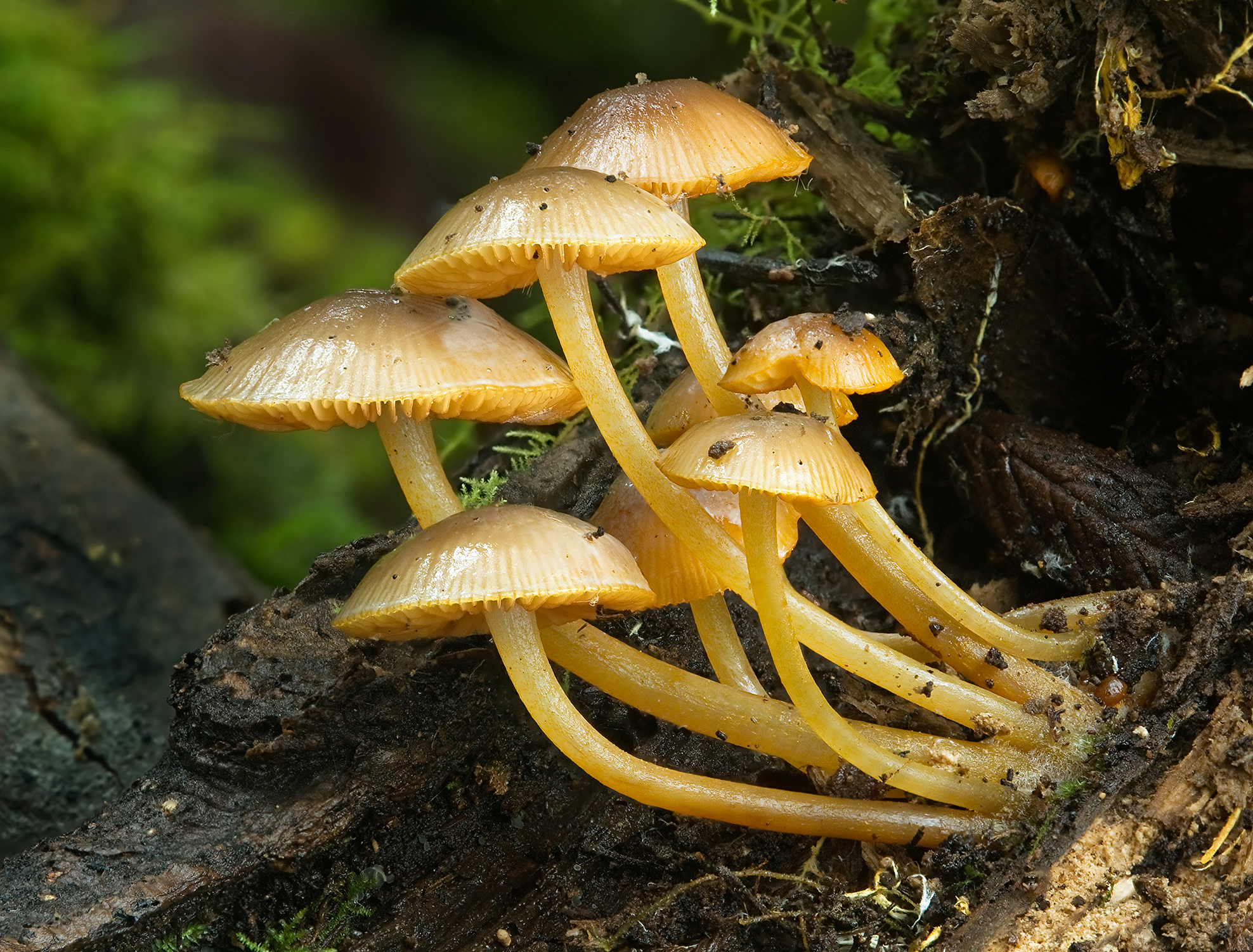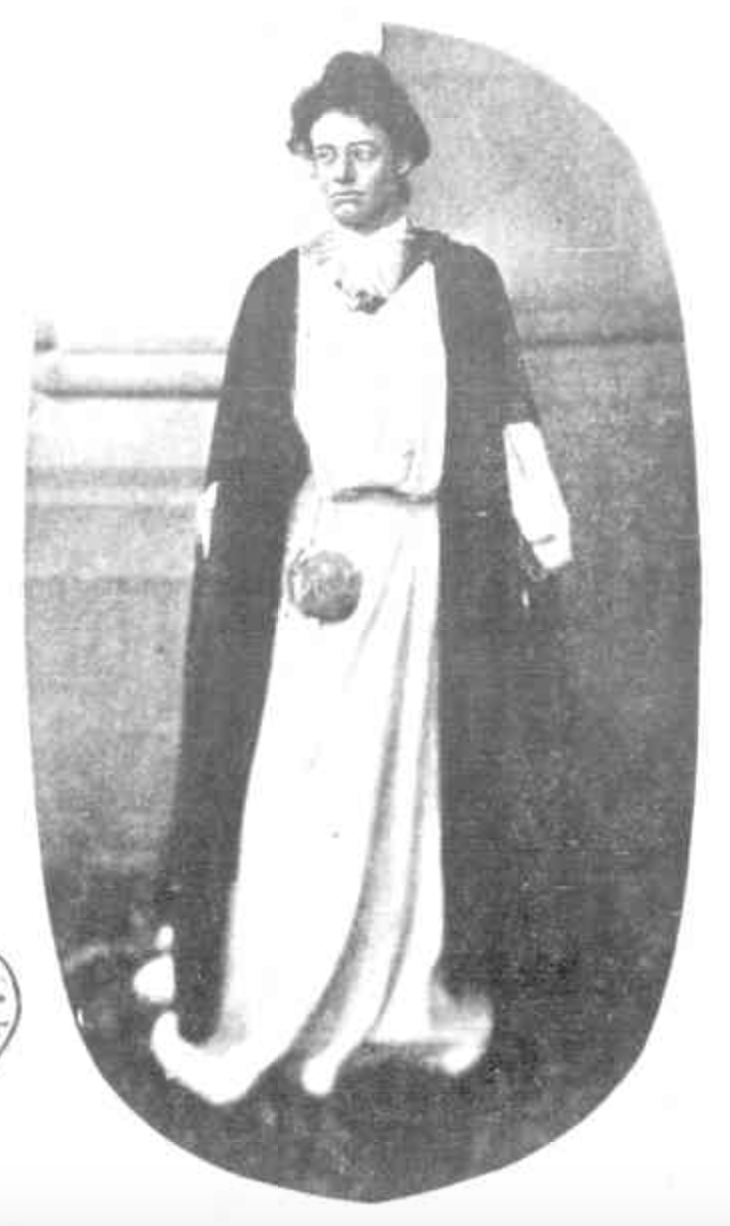|
Mary Dilys Glynne
Mary Dilys Glynne (19 February 1895 – 9 May 1991) was a British plant pathologist and mountaineer. She was the first plant pathologist at Rothamsted Experimental Station and was particularly interested in soil-based fungal diseases including potato wart, eyespot (wheat), eyespot in wheat and take-all. She discovered a method for identifying varieties of crop resistant to these fungal diseases and proved that methods such as crop rotation only perpetuated the problem. Her research led to increased yields in agriculture, which was of particular note during World War II, and was appointed an OBE for her services to agriculture. Glynne was also a passionate mountaineer, climbing a number of famous Alpine peaks. She was the second person, the first woman, to climb Mount Spencer (New Zealand), Mount Spencer in New Zealand. Early life Glynne was born Mary Dilys Glynne Jones in Upper Bangor, Gwynedd in North Wales on 19 February 1895. Her father, John Glynne Jones, was a solicitor ... [...More Info...] [...Related Items...] OR: [Wikipedia] [Google] [Baidu] |
Bangor, Gwynedd
Bangor (; ) is a cathedral city and community A community is a social unit (a group of living things) with commonality such as place, norms, religion, values, customs, or identity. Communities may share a sense of place situated in a given geographical area (e.g. a country, village, ... in Gwynedd, North Wales. It is the oldest city in Wales. Historic counties of Wales, Historically part of Caernarfonshire, it had a population of 18,322 in 2019, according to the Office for National Statistics. Landmarks include Bangor Cathedral, Bangor University, Garth Pier, and the Menai Suspension Bridge and Britannia Bridge which connect the city to the Anglesey, Isle of Anglesey. History The origins of the city date back to the founding of a monastic establishment on the site of Bangor Cathedral by the Celtic saint Deiniol in the early 6th century AD. itself is an old Welsh word for a wattled enclosure, such as the one that originally surrounded the cathedral site. Th ... [...More Info...] [...Related Items...] OR: [Wikipedia] [Google] [Baidu] |
Mycology
Mycology is the branch of biology concerned with the study of fungi, including their genetic and biochemical properties, their taxonomy and their use to humans, including as a source for tinder, traditional medicine, food, and entheogens, as well as their dangers, such as toxicity or infection. A biologist specializing in mycology is called a mycologist. Mycology branches into the field of phytopathology, the study of plant diseases, and the two disciplines remain closely related because the vast majority of plant pathogens are fungi. Overview Historically, mycology was a branch of botany because, although fungi are evolutionarily more closely related to animals than to plants, this was not recognized until a few decades ago. Pioneer mycologists included Elias Magnus Fries, Christian Hendrik Persoon, Anton de Bary, Elizabeth Eaton Morse, and Lewis David von Schweinitz. Beatrix Potter, author of ''The Tale of Peter Rabbit'', also made significant contributions to the fiel ... [...More Info...] [...Related Items...] OR: [Wikipedia] [Google] [Baidu] |
Southern Alps
The Southern Alps (; officially Southern Alps / Kā Tiritiri o te Moana) is a mountain range extending along much of the length of New Zealand's South Island, reaching its greatest elevations near the range's western side. The name "Southern Alps" generally refers to the entire range, although separate names are given to many of the smaller ranges that form part of it. The range includes the South Island's Main Divide, which separates the water catchments of the more heavily populated eastern side of the island from those on the west coast. Politically, the Main Divide forms the boundary between the Marlborough, Canterbury and Otago regions to the southeast and the Tasman and West Coast regions to the northwest. Names The Māori name of the range is , meaning "the Mirage of the Ocean". The English explorer James Cook bestowed the name ''Southern Alps'' on 23 March 1770, admiring their "prodigious height". p. 384. They had previously been noted by Abel Tasman in 1642, whose ... [...More Info...] [...Related Items...] OR: [Wikipedia] [Google] [Baidu] |
Charles Scribner's Sons
Charles Scribner's Sons, or simply Scribner's or Scribner, is an American publisher based in New York City, known for publishing American authors including Henry James, Ernest Hemingway, F. Scott Fitzgerald, Kurt Vonnegut, Marjorie Kinnan Rawlings, Stephen King, Robert A. Heinlein, Thomas Wolfe, George Santayana, John Clellon Holmes, Don DeLillo, and Edith Wharton. The firm published ''Scribner's Magazine'' for many years. More recently, several Scribner titles and authors have garnered Pulitzer Prizes, National Book Awards and other merits. In 1978 the company merged with Atheneum and became The Scribner Book Companies. In turn it merged into Macmillan in 1984. Simon & Schuster bought Macmillan in 1994. By this point only the trade book and reference book operations still bore the original family name. After the merger, the Macmillan and Atheneum adult lists were merged into Scribner's and the Scribner's children list was merged into Atheneum. The former imprint, now simpl ... [...More Info...] [...Related Items...] OR: [Wikipedia] [Google] [Baidu] |
Dent Blanche
The Dent Blanche is a mountain in the Pennine Alps, lying in the canton of Valais in Switzerland. At -high, it is one of the highest peaks in the Alps. Naming The original name was probably ''Dent d'Hérens'', the current name of the nearby Dent d'Hérens which does not overlook the Val d'Hérens. The nearby north face of the Dent d'Hérens is glaciated while the Dent Blanche holds much less snow, it was even called ''Dent Noire'' (''Black Tooth'') on the Woerl Atlas of 1842. In fact on older maps, in the area where both summits lie, only the name ''Weisszahnhorn'' (from German: ''White Tooth Peak'') was given, the French name (''Dent Blanche'') only appearing in 1820. Because cartographers usually made their observations far from the mountainous remote areas and also because the Dent d'Hérens is sometime hidden behind the Dent Blanche thus less visible, the latter received the name. The inhabitants of the lower Val d'Hérens called the current Dent d'Hérens, ''Dent Blanche'' ... [...More Info...] [...Related Items...] OR: [Wikipedia] [Google] [Baidu] |
Owen Glynne Jones
150px, Portrait and signature of Owen Glynne Jones from his book ''Rock-climbing in the English Lake District'' Owen Glynne Jones (2 November 1867 – 28 August 1899) was a Welsh rock-climber and mountaineer. He established many new routes in the Lake District and elsewhere, often climbing with George and Ashley Abraham, brothers who photographed the climbs for posterity. Rock climbing Jones was born in London, England, the son of a Welsh carpenter-builder, and took a first-class Honours degree in experimental physics. Not able to obtain a professorship, he became physics master at the City of London School. He began climbing in 1888, and was among those pioneers who first perceived rock climbing as a sport. As a climber, he had an athletic climbing style, and is considered by many to be one of the first "rock gymnasts". Although Jones said little in his writings about his training tactics – other than working with dumbbells – there are several stories regarding his gymna ... [...More Info...] [...Related Items...] OR: [Wikipedia] [Google] [Baidu] |
Rationing In The United Kingdom
Rationing was introduced temporarily by the British government several times during the 20th century, during and immediately after a war. At the start of the Second World War in 1939, the United Kingdom was importing 20 million long tons of food per year, including about 70% of its cheese and sugar, almost 80% of fruit and about 70% of cereals and fats. The UK also imported more than half of its meat and relied on imported feed to support its domestic meat production. The civilian population of the country was about 50 million. It was one of the principal strategies of the Germans in the Battle of the Atlantic to attack shipping bound for Britain, restricting British industry and potentially starving the nation into submission. To deal with sometimes extreme shortages, the Ministry of Food instituted a system of rationing. To buy most rationed items, each person had to register at chosen shops and was provided with a ration book containing coupons. The shopkeeper was provide ... [...More Info...] [...Related Items...] OR: [Wikipedia] [Google] [Baidu] |
Gibellina Cerealis
''Gibellina cerealis'' is a fungal plant pathogen. It is a pathogen of wheat and similar species, causing white foot rot or basal stem rot. References Fungal plant pathogens and diseases Magnaporthales Fungus species {{fungus-plant-disease-stub ... [...More Info...] [...Related Items...] OR: [Wikipedia] [Google] [Baidu] |
British Association
The British Science Association (BSA) is a charity and learned society founded in 1831 to aid in the promotion and development of science. Until 2009 it was known as the British Association for the Advancement of Science (BA). The current Chief Executive is Katherine Mathieson. The BSA's mission is to get more people engaged in the field of science by coordinating, delivering, and overseeing different projects that are suited to achieve these goals. The BSA "envisions a society in which a diverse group of people can learn and apply the sciences in which they learn." and is managed by a professional staff located at their Head Office in the Wellcome Wolfson Building. The BSA offers a wide variety of activities and events that both recognize and encourage people to be involved in science. These include the British Science Festival, British Science Week, the CREST Awards, Huxley Summit, Media Fellowships Scheme, along with regional and local events. History Foundation The Asso ... [...More Info...] [...Related Items...] OR: [Wikipedia] [Google] [Baidu] |
University Of Melbourne
The University of Melbourne is a public research university located in Melbourne, Australia. Founded in 1853, it is Australia's second oldest university and the oldest in Victoria. Its main campus is located in Parkville, an inner suburb north of Melbourne's central business district, with several other campuses located across Victoria. Incorporated in the 19th century by the colony of Victoria, the University of Melbourne is one of Australia's six sandstone universities and a member of the Group of Eight, Universitas 21, Washington University's McDonnell International Scholars Academy, and the Association of Pacific Rim Universities. Since 1872, many residential colleges have become affiliated with the university, providing accommodation for students and faculty, and academic, sporting and cultural programs. There are ten colleges located on the main campus and in nearby suburbs. The university comprises ten separate academic units and is associated with numerous institut ... [...More Info...] [...Related Items...] OR: [Wikipedia] [Google] [Baidu] |
International Federation Of University Women
Graduate Women International (GWI), originally named the International Federation of University Women (IFUW), is an international organisation for women university graduates. IFUW was founded in 1919 following the First World War by both British and North American college and university workers who were hoping to contribute to congenial relations between women of different nationalities. Over 100 years later, GWI continues to advocate for women's rights, equality and empowerment through the access to quality secondary and tertiary education as well as training up to the highest levels. The goal is for 100% of girls and women worldwide to achieve an education beyond primary school. Graduate Women International (GWI) is based in Geneva, Switzerland, and advocates for girls' and women's rights, equality and empowerment through access to lifelong quality education. The organisation's work is centred on Education for All, Secondary Education, Tertiary Education, Continuing Education, and ... [...More Info...] [...Related Items...] OR: [Wikipedia] [Google] [Baidu] |
Georgina Sweet
Georgina Sweet (22 January 1875 – 1 January 1946) was an Australian zoologist and women's rights activist. She was the first woman to graduate with a Doctor of Science from the University of Melbourne, and was the first female acting professor in an Australian university. Early life and education Sweet was born into a Methodist family in Brunswick, Victoria; her English father George Sweet was an amateur geologist and encouraged both his daughters to enter tertiary education.Monica MacCallum, Sweet, Georgina (1875 - 1946)Australian Dictionary of Biography Volume 12, Melbourne University Press, 1990, pp 149–150. Sweet attended the Parkville Ladies' College, then went on to the University of Melbourne where she completed her BSc in 1896 and her MSc in 1898. Her early research was supervised by Baldwin Spencer and was on Australian fauna, but her later studies were based in the veterinary department working on parasites. She was awarded her DSc in 1904 for her stu ... [...More Info...] [...Related Items...] OR: [Wikipedia] [Google] [Baidu] |








